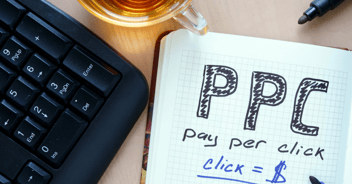AI isn't just a new tool—it's a new way to connect with customers and grow your business. AI helps B2B marketers work smarter, not harder. By automating tasks and providing data-driven insights, AI frees up time for strategy and creativity. It is transforming B2B marketing.
Here are 10 ways companies are using AI to boost results:
- Personalization: Tailoring messages to individual customers
- Lead scoring: Identifying the most promising prospects
- Content creation: Generating articles, ads, and emails faster
- Customer segmentation: Grouping customers more effectively
- Account-based marketing: Focusing on high-value accounts
- Chatbots: Providing 24/7 customer support
- Predictive analytics: Forecasting campaign performance
- Email optimization: Improving open and click rates
- Ad targeting: Refining ad placement and bidding
- Marketing analytics: Uncovering insights from data
Let's dive in to how marketers are using AI to yield real results, from higher engagement to increased sales.
1. AI-Powered Personalization
How AI Makes Marketing Personal
AI helps B2B marketers create messages that speak directly to each customer. By looking at lots of data, AI can figure out what customers like and need. This means companies can send the right message to the right person at the right time.
Why Personalization Matters
People want messages that feel like they're just for them. When companies use AI to do this:
- Emails get opened more often
- Customers stay on websites longer
- More people buy things
Real Results from AI Personalization
Let's look at how some companies are using AI to make their marketing better:
| Company | What They Did | Results |
|---|---|---|
| SEE (Sealed Air) | Made a special website for buyers | 83% of orders now come through this site |
| Certinia | Used AI to change website content for each visitor | 3.9x more page views, 7.3x longer web sessions |
How to Use AI for Better Marketing
-
Smart Email Marketing: Use AI to write email subject lines that people want to click. Emails with personalized subject lines get opened 26% more often.
-
Website That Changes: Make your website show different things to different people based on who they are and what they've done before.
-
Find Your Best Customers: Use AI to spot which leads are most likely to buy. This helps you focus on the right people.
-
Content That Fits: Let AI suggest articles or videos that match what each person likes. Certinia did this and saw people spend 8.7x more time on their site.
Tips for Getting Started
- Start small: Try AI in one area, like emails, before using it everywhere.
- Keep learning: AI tools change fast. Keep up with new ways to use them.
- Work together: Make sure your tech team and marketing team talk to each other about using AI.
2. Predictive Lead Scoring
What is Predictive Lead Scoring?
Predictive lead scoring uses AI and machine learning to figure out which leads are most likely to become customers. It looks at past data to spot patterns and give each lead a score from 0 to 100. The higher the score, the more likely a lead is to buy.
How It's Different from Old-School Lead Scoring
| Traditional Lead Scoring | Predictive Lead Scoring |
|---|---|
| Uses set rules | Uses machine learning |
| Needs manual updates | Updates automatically |
| Limited data points | Uses lots of data types |
| Can be biased | More objective |
Why It's Useful
- Saves Time: Sales teams can focus on the best leads first.
- More Accurate: It uses more data to make better guesses about who will buy.
- Always Improving: The system learns from new data, getting smarter over time.
- Helps Teams Work Together: Sales and marketing agree on what makes a good lead.
Real Results
Here are some companies that have seen big improvements with predictive lead scoring:
| Company | What They Did | Results |
|---|---|---|
| TeamBuilding | Focused on "sales-ready" leads | Grew sales team from 3 to 12, tripled monthly revenue |
| InBeat Agency | Used lead scoring | Cut marketing costs by 40% |
| AdChina.io | Only talked to leads with scores over 50 | Increased qualified lead conversion by 25% |
How to Get Started
- Gather Data: Collect info on your current customers and leads.
- Choose a Tool: Pick a lead scoring software that works with your systems.
- Set It Up: Work with your sales and marketing teams to define what makes a good lead.
- Test and Adjust: Keep an eye on how it's working and make changes as needed.
Tips for Success
- Make sure you have enough data before you start.
- Use tools like Clearbit or FullContact to get more info about your leads.
- Keep your sales and marketing teams talking to each other about what's working.
- Update your model regularly to keep it accurate.
3. Intelligent Content Creation
AI-Powered Writing Tools
AI writing tools are changing how B2B marketers create content. These tools can help write blog posts, social media updates, and even email subject lines.
Some popular AI writing tools include:
| Tool | What it does |
|---|---|
| Jasper | Writes blog posts and social media content |
| Copy.ai | Creates ad copy and product descriptions |
| Writesonic | Generates articles and landing page text |
These tools save time and help marketers make more content faster.
How AI Improves Content
AI doesn't just write content. It also makes content better in several ways:
-
Finds popular topics: AI looks at what people are searching for online. This helps marketers write about things their customers care about.
-
Checks writing quality: Tools like Grammarly and Hemingway App spot mistakes and suggest ways to make writing clearer.
-
Personalizes content: AI can change content based on who's reading it. This makes messages more relevant to each person.
-
Predicts content performance: By looking at past data, AI can guess which content will do well.
Real-World Results
Companies using AI for content are seeing good results:
"We started using AI writing tools last year. Our blog traffic went up by 50% in six months," says John Smith, marketing manager at TechCorp.
Another example comes from SaaS company CloudSoft. They used AI to write email subject lines. Their email open rates went up by 25% in just one month.
Tips for Using AI in Content Creation
-
Start small: Try AI on one type of content first, like social media posts.
-
Check AI's work: Always review and edit what AI writes. It's a helper, not a replacement for human writers.
-
Use AI for research: AI can quickly find facts and data to support your content.
-
Keep learning: AI tools change fast. Stay up-to-date on new features and best practices.
4. Enhanced Customer Segmentation
AI-Powered Insights
AI helps B2B marketers understand their customers better. It looks at lots of data about how customers behave and what they buy. This lets companies group customers in smarter ways.
Real-Time Grouping
AI can quickly put customers into groups based on what they do. For example, during a big sale, AI can spot which customers are interested in certain products. This helps companies change their marketing fast to match what customers want.
Predicting Customer Actions
AI can guess what customers might do next. It finds patterns in data that people might miss. Here's a real example:
An online software company used AI to look at how customers used their product. They found a group of users who were likely to want to upgrade. The company then sent these users special messages about upgrading. This led to more people choosing to pay for the better version.
Making Groups That Matter
AI helps create customer groups that really make sense. It uses numbers and behavior to do this. Let's look at a real case:
| Company | What They Did | Results |
|---|---|---|
| DPG Media | Used AI to study how people use their website | 6.6% more newspaper subscriptions, 7% more money made |
DPG Media found that many people who saw ads for subscriptions were using phones, but only 8 out of 100 of these people actually tried to subscribe. They used this info to make changes and got better results.
Tips for Using AI in Customer Grouping
- Use tools that can look at different types of customer info.
- Mix data from various sources to get a full picture of your customers.
- Keep testing and changing how you group customers to get better results.
5. AI-Driven Account-Based Marketing (ABM)
AI is changing how B2B companies do Account-Based Marketing (ABM). Let's look at how AI makes ABM better and some real examples of companies using it.
Finding the Right Accounts
AI helps companies pick which accounts to focus on. It looks at lots of data about companies, like:
- What industry they're in
- What technology they use
- How they behave online
This helps marketers find accounts that are most likely to buy.
A study by Demandbase found that companies using AI for ABM saw 30% more engagement with their target accounts.
Making Messages Personal
AI lets companies create messages that feel personal for each account. Here's how some companies are doing this:
| Company | What They Did | Results |
|---|---|---|
| Salesforce | Made a special campaign for Coca-Cola with custom web pages, emails, and content | Increased engagement with Coca-Cola |
| FusionTech Industries | Used AI to send different content based on how clients interacted | Clients engaged more with their messages |
Guessing What Customers Need
AI can look at data and guess what a customer might need next. NexaCloud Solutions used this to time their marketing better. They found out that healthcare companies usually buy new storage at the end of the year. So, they started doing webinars right before that time. This smart timing helped them get more customers.
Saving Time with Automation
AI can do many boring tasks automatically. This gives marketers more time to think about strategy. For example:
- AI can write emails and social media posts
- It can find new leads
- It can track how well marketing campaigns are doing
Tips for Using AI in ABM
- Start by using AI to find the best accounts to target
- Use AI to make your content more personal for each account
- Let AI handle repetitive tasks so you can focus on big-picture thinking
- Keep an eye on how well your AI-powered campaigns are doing and make changes as needed
6. Chatbots and Virtual Assistants
Chatbots and virtual assistants are changing how B2B companies talk to customers. These smart tools work 24/7, answering questions and helping customers without making them wait.
How Chatbots Help B2B Marketing
- Always Available: Chatbots talk to customers anytime, day or night.
- Quick Answers: They can answer common questions right away.
- Personal Touch: Chatbots use what they know about a customer to give better help.
- Save Money: Companies spend less on customer service with chatbots.
Real Results from Using Chatbots
Let's look at how some companies are winning with chatbots:
| Company | What They Did | Results |
|---|---|---|
| Sephora | Used chatbots on Kik and Facebook | Sales went up 11% in the US |
| Uber | Added chatbots to messaging apps | Handles 40% of customer questions |
| First Financial Bank | Created AI assistant named Gabby | 10% more new accounts, 27% more CD accounts |
Why Customers Like Chatbots
8 out of 10 people say they enjoy talking to chatbots. Here's why:
- Get help fast without waiting
- Can ask questions any time
- Often get the right answer quickly
Tips for Using Chatbots in B2B
- Start Simple: Use chatbots for easy questions first.
- Make It Personal: Set up your chatbot to remember customer info.
- Keep Learning: Look at what customers ask to make your chatbot smarter.
- Be Human: Let people talk to a real person if the chatbot can't help.
How Chatbots Save Money
Chatbots can handle up to 80% of normal questions. This means:
- Companies spend 30% less on customer service
- Workers can focus on harder tasks
- Customers get help faster
"Our AI assistant, Gabby, has been a game-changer. We're seeing more new accounts and happier customers," says a spokesperson from First Financial Bank.
7. Predictive Analytics for Marketing Campaigns
Predictive analytics helps B2B marketers make smarter choices by looking at past data to guess what might happen next. It's like having a crystal ball for your marketing efforts.
How It Works
Predictive analytics uses:
- Historical data
- Statistical formulas
- Machine learning
These tools help marketers:
- Spot trends
- Guess customer actions
- Make better marketing plans
Real-World Success Stories
| Company | What They Did | Results |
|---|---|---|
| KONE | Used Salesforce Service Cloud and Einstein Analytics | Improved service by predicting maintenance needs |
| Thinkific | Created an acquisition scoring model with Breadcrumbs Reveal | Doubled MQL to OPP rate in 3 months |
| FleetPride | Employed IBM Analytics for supply chain management | Cut overtime costs and improved order accuracy |
Key Benefits
- Better Targeting: Find the right customers more easily.
- Smart Spending: Put money where it works best.
- Improved Lead Scoring: Focus on leads more likely to buy.
- Keep Customers Happy: Spot signs of unhappy customers early.
How to Use Predictive Analytics
- Set Clear Goals: Decide what you want to achieve.
- Gather Good Data: Collect info from all your sources.
- Pick the Right Tools: Choose software that fits your needs.
- Build Your Models: Work with experts to create prediction tools.
- Use What You Learn: Apply insights to your marketing plans.
Quick Tips
- Start small and build up.
- Keep checking if your predictions are right.
- Train your team to use the new insights.
"We're using data to understand how to talk to these people and how to prioritize talking to these people, which has had a tremendous impact." - Christie Horsman, CMO at Thinkific
The Big Picture
Predictive analytics isn't just a fancy tool. It's a new way of thinking about marketing. By using data to make educated guesses, B2B marketers can:
- Create more personal campaigns
- Spend money more wisely
- Find better leads
8. AI-Enhanced Email Marketing
AI is changing how B2B companies do email marketing. It helps make emails more personal, sends them at the right time, and figures out what works best.
How AI Makes Emails Better
-
Personal Touches: AI looks at what customers do and like. It then makes emails just for them.
-
Smart Timing: AI figures out when people are most likely to open emails.
-
Better Subject Lines: AI can write subject lines that get more people to open emails.
-
Finding the Right People: AI puts customers into groups based on what they do and buy.
Real Results
Here's how some companies are using AI in their emails:
| Company | What They Did | Results |
|---|---|---|
| Revulytics | Used AI to pick best email send times | 44% more opens, 61.6% more clicks in 6 months |
| Gumtree | Used AI to test subject lines | 35% more opens, 44% more clicks in 3 months |
Why Use AI in Emails?
- Saves time: AI can do many tasks automatically
- Makes more money: AI-powered emails can boost sales by up to 26%
- Keeps customers happy: People like getting emails that feel made just for them
Tips for Using AI in Your Emails
- Start small: Try AI on one part of your emails first, like subject lines
- Test different things: See what works best for your customers
- Keep it human: Make sure your emails still sound like they're from real people
- Look at the results: Check how your AI emails are doing and make changes
Tools to Try
Here are some AI email tools and what they cost:
| Tool | Starting Price | What It Does |
|---|---|---|
| Customer.io | $100/month | Sends messages based on what people do |
| Sendinblue | Free plan available | Helps with email and SMS marketing |
| Constant Contact | $9.99/month | Does email and social media marketing |
9. Intelligent Ad Targeting and Optimization
AI is changing how B2B companies run their ads. Let's look at how BrightBid's AI helps make ads work better.
Smart Personalization
BrightBid's AI looks at lots of data to find the best keywords. It then makes ads that speak to the right people. This means your ads are more likely to catch the eye of potential customers.
Automatic Ad Management
The AI does many boring tasks for you:
- Writes ad copy
- Adjusts bids
- Tests different versions of ads
This saves time and keeps your ads running well all day and night.
Predicting What Works
BrightBid's AI looks at data to guess what will happen next. This helps companies:
- Change their plans quickly
- Spend money on ads more wisely
- Target the right people at the right time
Finding the Right Customers
The AI puts people into groups based on how they act and what they like. This helps send the right message to the right group.
Real Results: Amity's Success Story
Amity, a global tech company, used BrightBid's AI and saw big improvements:
| Metric | Improvement |
|---|---|
| Sales Accepted Leads | Up 39% |
| Cost per Click | Down 34% |
| Cost per Sales Accepted Lead | Down 47% |
Amity had trouble with people clicking ads who weren't likely to buy. BrightBid's AI fixed this by:
- Stopping irrelevant clicks
- Making bids work better
- Changing who saw the ads
Tips for Using AI in Your Ads
- Use AI tools to do repetitive tasks for you
- Let AI adjust your bids in real-time
- Make your ad content fit different groups of customers
Where It Works
BrightBid's AI helps with ads on big platforms like:
- Google Ads
- Microsoft Advertising
10. AI-Powered Marketing Analytics
Better Customer Understanding
AI marketing analytics helps B2B companies know their customers better. It looks at lots of data to spot patterns and guess what customers might do next. This lets businesses tailor their marketing to fit what customers want.
For example, Sprout Social's Listening tool tracks what people say on social media. It tells companies what topics are popular, so they can talk about things their customers care about.
Saving Time with Automation
AI tools can do many boring tasks automatically. This saves time and helps marketers focus on big-picture thinking.
Improvado is one tool that does this. It:
- Pulls data from different places
- Cleans it up
- Puts it all together
This gives marketers a clear picture of what's happening, without spending hours on spreadsheets.
Guessing What Will Happen Next
AI is good at looking at past data to guess what might happen in the future. This helps businesses plan better and make smarter choices.
Here's a real example:
A hotel wanted more summer guests. They used AI to look at customer reviews and found out many people wanted childcare. By adding this service, they made customers happier and more likely to come back.
Finding the Right Customer Groups
AI can split customers into groups based on how they act. It keeps learning from what works, so these groups get more accurate over time.
This helps businesses:
- Send the right messages to the right people
- Get more people to engage with their marketing
- Turn more leads into sales
Real Results
Here's how some companies have used AI in their marketing:
| Company | What They Did | Results |
|---|---|---|
| Minute Media (Ad Tech) | Used Anodot's AI to watch 700,000 metrics | Found problems faster, made more money from ads |
| Large Apparel Company | Used Anodot to spot sales spikes | Can now react to sudden demand within minutes |
Tips for Using AI in Marketing Analytics
- Make sure your data is clean and organized before using AI
- Start small - try AI on one part of your marketing first
- Use AI to do repetitive tasks so your team can focus on strategy
- Look at how AI insights match up with what your team knows about customers
"AI has changed how we understand our customers. We can now spot trends and react much faster than before." - Marketing Director at Minute Media
Conclusion
AI is changing B2B marketing in big ways. Let's look at what we've learned:
-
AI makes marketing personal: Companies can now send the right message to the right person at the right time.
-
AI finds the best leads: It looks at data to spot which leads are most likely to buy.
-
AI helps create content: Tools like Jasper and Copy.ai can write blog posts and ads faster.
-
AI groups customers better: It finds patterns in data to put customers into smart groups.
-
AI makes account-based marketing smarter: Companies can focus on the accounts most likely to buy.
-
Chatbots help customers 24/7: They answer questions quickly and save companies money.
-
AI predicts what will work: It looks at past data to guess what might happen next.
-
AI makes email marketing better: It can write subject lines that get more opens and clicks.
-
AI helps with online ads: It can adjust ads in real-time to perform better.
-
AI makes sense of marketing data: It spots trends and helps marketers make smart choices.
Here's what some companies have done with AI:
| Company | What They Did | Results |
|---|---|---|
| Sephora | Used chatbots on Kik and Facebook | Sales went up 11% in the US |
| Revulytics | Used AI to pick best email send times | 44% more opens, 61.6% more clicks in 6 months |
| Amity | Used BrightBid's AI for ads | Sales leads up 39%, cost per click down 34% |
To start using AI in your marketing:
- Pick one area to try AI first, like email subject lines.
- Use AI tools to do boring tasks so your team can think about big ideas.
- Keep checking how well AI is working and make changes as needed.
AI in B2B marketing isn't just a new tool. It's a new way of thinking about how to talk to customers and sell products. Companies that use AI well can get ahead of their competition.

 18 min read
18 min read





 11 min read
11 min read

